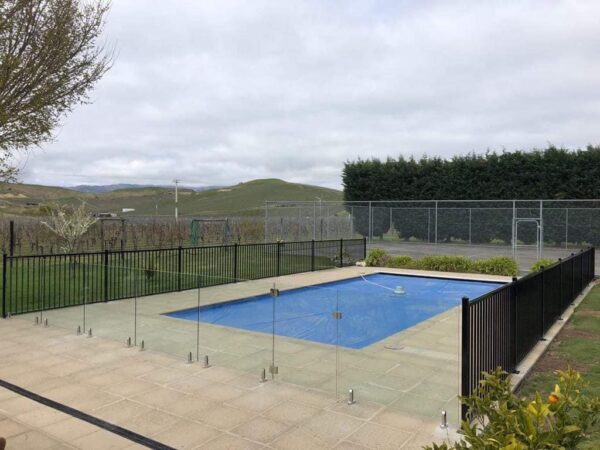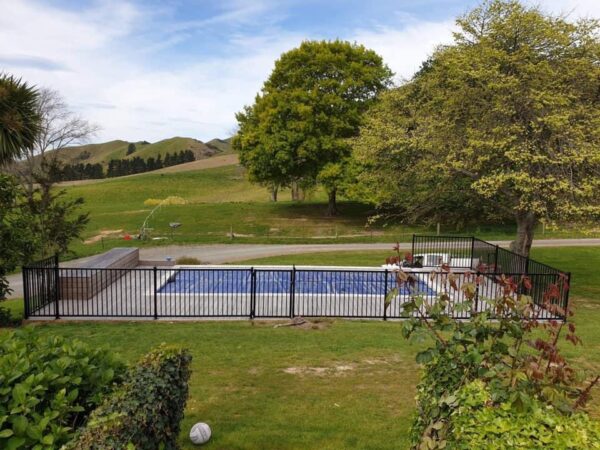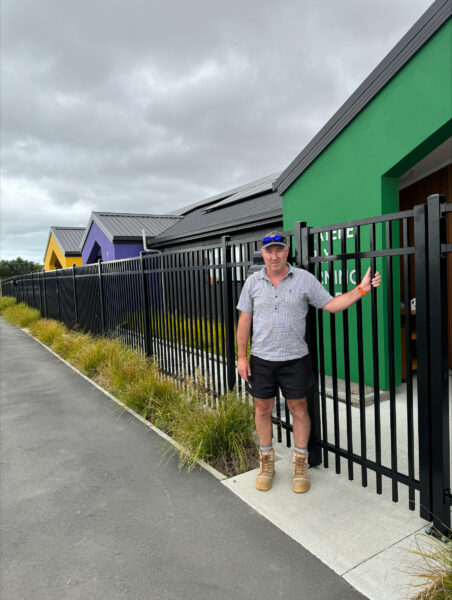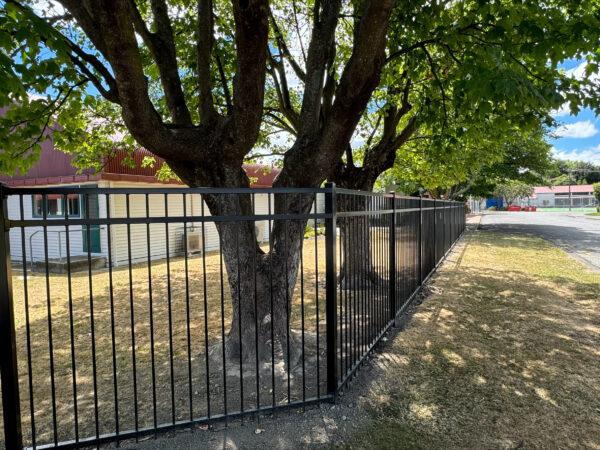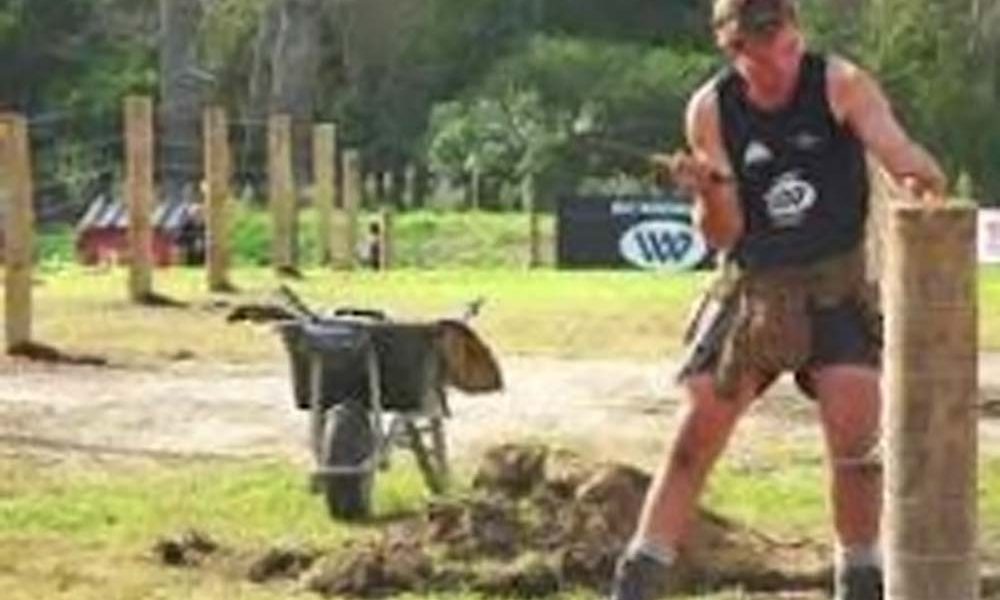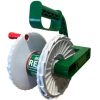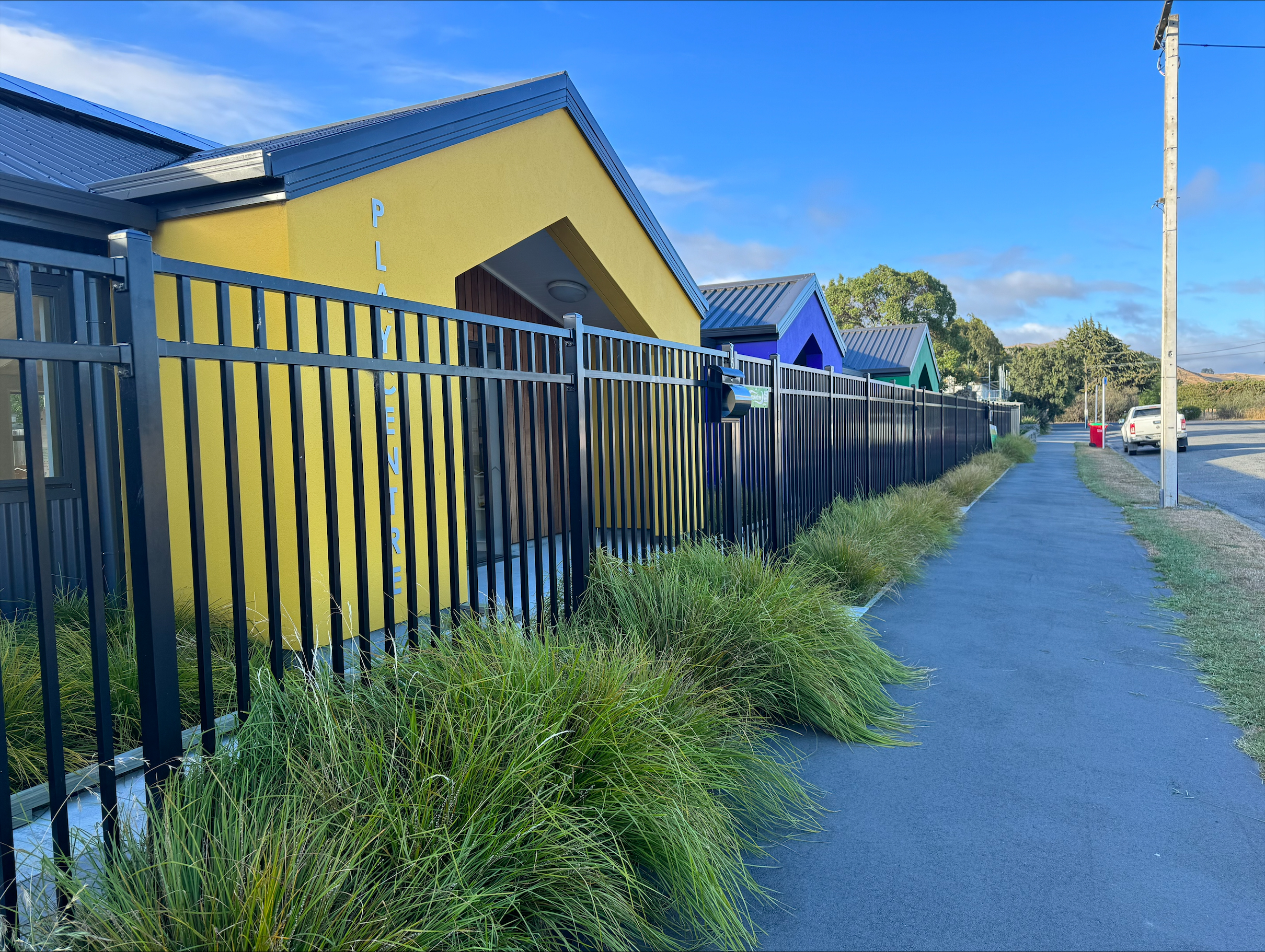
While kids’ safety is the end game for school and pool fencing, there’s a lot more to it than whipping up an impenetrable barrier.
In the last year, Mike Renner from Renner Fencing has put in fencing for three schools and two pools around Marlborough’s Awatere Valley. The jobs have taken technical attention, relationship nous and a good grasp of contemporary design.
Pools are never easy
“Pools are never easy,” says Mike. “It pays to do your research ahead of time. Getting in and knowing the rules helps a lot when quoting. Rules and regulations can differ across council areas, and a client might want a certain thing but that might not meet the criteria.”
Fencing contractors can usually find rules and regulations for pool fencing online on the local council’s website. Pool covers are a case in point. Popular in recent years for keeping debris out and keeping warmth in, covers are often also used for stopping children from falling in unsupervised. Now, in Marlborough, they are no longer approved under the local council regulations and fences must go up around the pool.
Mike says many residential pools are close to the house, which has implications for doorways. “Doors must lock: sliding doors cannot open more than one metre. There might be trees, shrubs and other bits and pieces around for shade. If any kid can climb up and over, then that tree has to come out. Fence height needs to be 1.2m, at a minimum, and either solid or vertical slats no more than 100mm apart with horizontals 900mm so kids have nowhere to put their little feet to climb.”
The visual appeal of pool fencing has a large bearing on what clients end up running with. Clients look to Mike for ideas around what will look good and allow them to make the most of their scenic views. He usually follows the process of finding out what the client wants first, has a frank discussion on what won’t work, then offers ideas.
“Some clients have done their research in the beginning,” he says. “A select few come armed with a clear idea of what they want, but most will want your input first. A handful of brochures with pool fencing designs is very useful. You can add your touch, and the client can add theirs.”
“Some more expensive fence materials, like glass, are popular first choices, but it can come down to budget. Then, there’s weather patterns — where the sun comes up, where the prevailing winds are. These impact what you put in. There’s all that to tack on too.”
Schools – there’s a lot to discuss
In comparison to pool fencing, design input for a school fence is minimal. Unsurprisingly, fence design parameters are laid out as part of the Ministry of Education tender process. Most school fences are 1.8m high. Mike says this is the standard for a school which may have a child who the Ministry considers a “runner”. School fences have the same principles as the pool fences – they should not be climbable, to keep children in and safe when unsupervised.
“Getting on with the Ministry of Education project manager as well as the principal is the key to managing school fence jobs,” says Mike. “There is a lot to discuss, then we devise a plan that is best for everyone. Spotting risks, raising them, keeping open communication, providing alternatives keeps school projects on track, and we do everything there is to help them achieve what is to be achieved.”
“With schools, when putting fences on boundaries, you need to deal with neighbouring residential properties, roads and reserves, and footpaths. It can open a can of worms. Getting the boundary surveyed before you start is ideal, if the Ministry doesn’t have a current survey in their tender already,
it is the way to go.”
Once Mike knows where the boundary sits, it’s a case of working out whether the new fence can run along or whether it might need to deviate from the legal boundary – and following through with subsequent discussions with various people and organisations impacted.
“For one job we are doing, the boundary is out on the footpath. Obviously, the council wasn’t too keen to rebuild the path.”
Trees are an issue too. Some are valued for their shade. Schools might want to keep them, so Mike looks at moving the boundary fencing around them.
Mike’s local school, Seddon School, was the first combined school-and-pool fence job. The land was raised up along the boundary line, so the fence moved inside the boundary to reduce the work for the caretaker to maintain this uneven ground. First, the decision to vary the boundary fence was made by the principal, then passed by the Ministry.
School fence designs in Marlborough fall into two categories depending on the shared boundaries. All residential properties are solid fences; the rest, like main entrance road reserves and council boundaries, are see-through panel fencing. Mike uses standard paling, iron and Smartwall for the solid fences and powder-coated steel or aluminium panels. Almost all posts are augered and concreted in.
“Another vital task is to find out about services. Most schools are land mines! There is a lot going on under the surface. Contact your local power supplier for locations and Before You Dig for phone and fibre. Councils can help with water and wastewater pipes, but, often, the best information is from local knowledge like the caretaker.”
“The right tools and machinery to do the job are up there in my mind. We use hand augers or, even better, a small digger to auger the holes. String lines, levels, and good battery tools are key. A dumpy level to get the fence heights correct and level is useful.”
“It is always easy if you are working with flat and level ground, but in most cases, you will have to deal with sloping ground. Solid fences can be run with the ground on a sloping level, but you can’t do that with panel fencing. Either you need to use racking panels on steep slopes or stage the fence by lowering or raising each bay or every second, for example, in the same amount.”
Mike enjoys going the extra mile with school fence work. “At Seddon, my local school, I wanted to do whatever I could for the school because they have helped me along the way. We had pulled down the old fence, so I had a skip for us. While we were there, we chucked in another skip, for nothing, for the school to do a tidy up. Little things like that, going that little bit further, helps them out along the way.”
Article written by Megan Fowlie
Published in the Pools & Schools Feature in WIRED Issue 72 / MARCH 2024 by Fencing Contractors Association NZ
Read WIRED online
Follow us on Facebook
© Fencing Contractors Association NZ (FCANZ)


